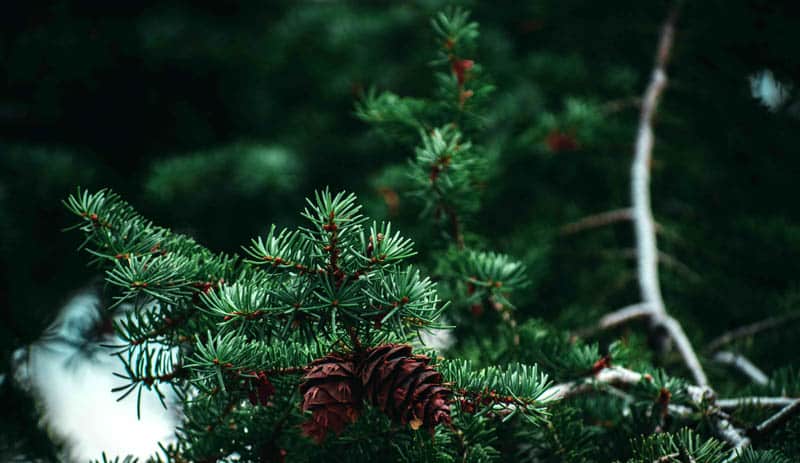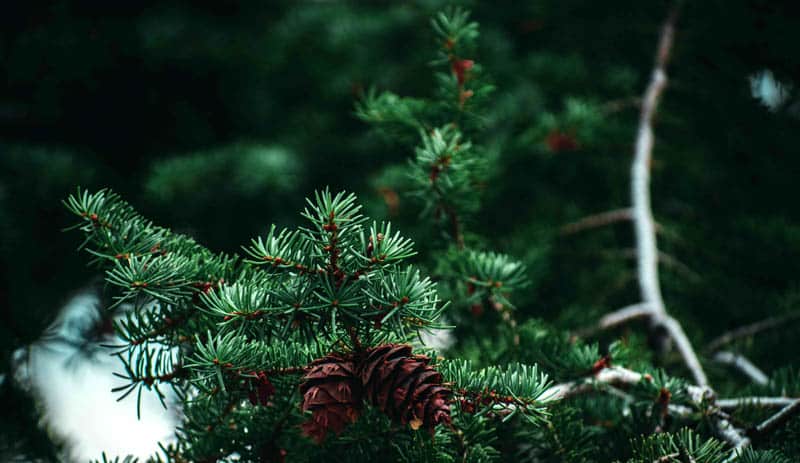Pine trees tend to pass through their essential chore changing energy through the solar light into the food, they require to develop and live on – photosynthesis. Putting it differently – through green leaves with a specific shape shared via many different conifers are needles.
Likewise, another tree range’s from basic leaves, pine needles need to absorb and discharge the gases included in photosynthesis, inhalation, and even alter water deprivation which is known as transpiration.

Transpiration is a particular good-sized problem within the dry weather where mostly moderate and subtropical species of pine blossom. So, let’s have a look at some ways for pine tree identification by needles. After identify, you need to clean it. And if you like to clean pine needles you can buy rake for pine needles. Which is really helpful.
Steps to Identify Pine Tree by Needles
Let’s first identify the pine trees through the size of the needles in length.
13-18 Inches in Length
Those are a number of the lengthy needles on pine trees someone could ever discover. Longleaf evergreen or Pinus palustris own needles that are about eight to eighteen inches lengthy and develops at a charge of twenty-four to thirty-six inches every year.
Torrey pine is as Pinus torreyana has to bear about eight to thirteen inches lengthy needles and develops at a charge of thirty-six inches each year.
Moreover, both these trees develop about sixty-five feet tall with very massive cones that are over three inches in length.
8-12 Inches in Length
Assume needles eight to twelve inches in length while someone plants those pine bushes that develop at about sixty-five ft tall. Additionally, feature very massive cones that are over three inches in length.
In contrast, Coulter pine which is also called Pinus coulteri increases twenty-four to thirty-six inches per year.
Whereas gray pine which is referred to Pinus sabiniana, additionally called digger pine, increase at thirty-six inches yearly. This tree is extremely dryness receptive and produces cones in autumn.
Around 10 Inches in Length
These pine bushes include needles of about ten inches in length in the garden or lawn. Slash pine, also known as Pinus elliottii generates needles seven over ten inches in length, owns very tiny cones.
Likewise, Ponderosa pine which is called Pinus ponderosa represents needles that are about five to ten inches in length and possess extremely massive cones of about three inches in length in the summer season, autumn or wintry weather.
4 to 6 Inches in Length
Assume these needles are at least four to six inches in length on those pine trees. Since the Monterrey pine, also referred to as Pinus radiata, develops about eighty to a hundred ft tall.
In contrast, the Bishop pine, known as Pinus muricata, which huge cones of about one and a half to three inches in length in the summer season, autumn or winter. However, both these trees develop around thirty-six inches every season.
Special Clarification of Pine Trees
Pine trees identification by needles in terms of shape. The irregular streaks leaves of every pine tree types are called “needles” due to their lengthy and thin form. However, the scrawny leaves develop in spirals encompassing the branches that grow from the more abundant twigs of the evergreen tree.
Therefore, the needles stay in spirals known as “candles” which befall from a tree following every 2 years to build a kind of carpeting beneath the tree.
Furthermore, the carpet of these old and befallen needles beneath pine trees is known as “duff.” similarly, this duff may suppress different variations of bushes from developing, allowing the pine to form an edging in populating the place.
It may additionally capture fire and burn out rapidly, preventing a lightening hearth from expanding to greater combustible kinds of pine trees.
The slick exterior coating of the evergreen tree needles allows saving the tree of missing water within its smooth exterior parts. This enables the tree for doing well in dried situations. While brush fires show up in a pine tree, but the aid of the slick needle in the tree to stop catching fire.
Conclusion
Pines are evergreen trees and they usually don’t own normal leaves similar to trees. Rather, they possess needles. One can easily recognize a pine tree with it’s different and unique needles.
However, pine tree identification by needles can be through the texture of the needles because they are thick and also point. By touching a needle, if that is length yet bendy, get assured that is a pine tree needle.

